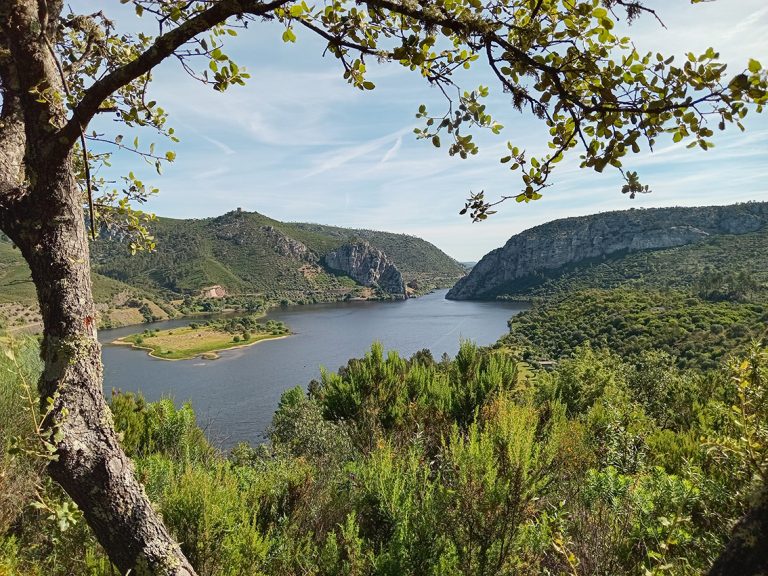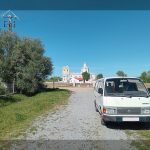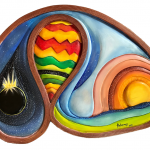Our second road trip in April 2024 took us north to Nisa and surroundings in upper Alentejo. We hadn’t set out to make a major trek but while visiting the tourist office we picked up a leaflet and map of PR9 Trilho da Mina de Ouro do Conhal (Hike of the Roman Gold Mines), which sets out from a little village called Arneiro close to the Rio Tejo that divides the Alentejo region from Beira Baixa.
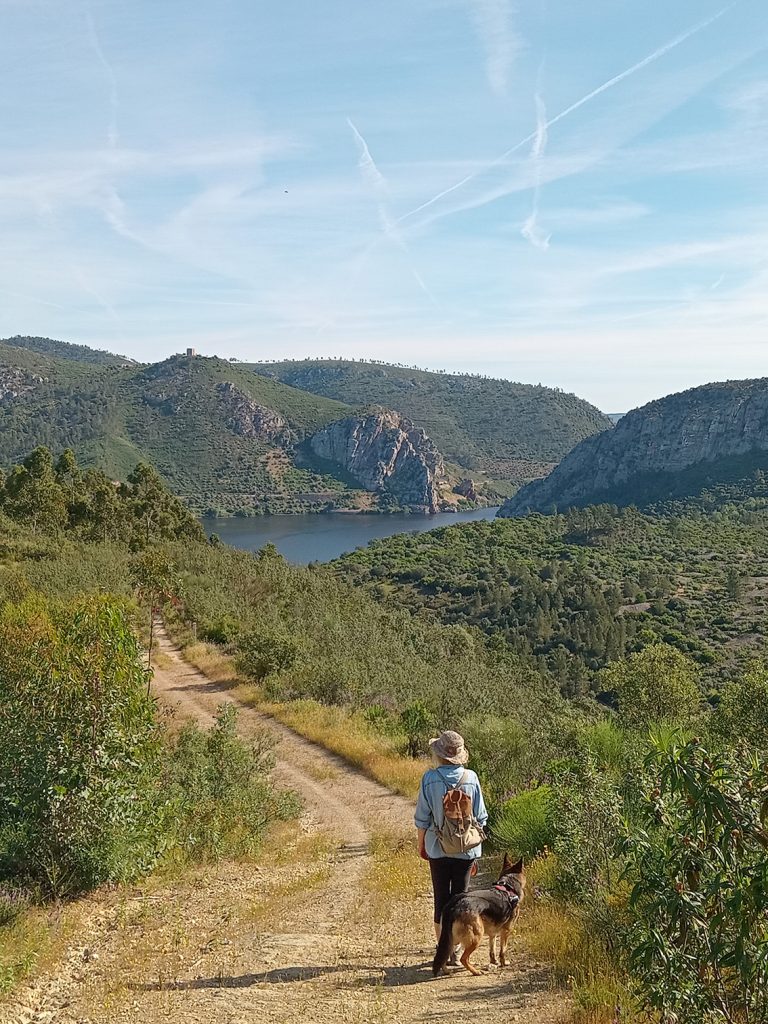 Set off point
Set off point
We arrived at the Interpretation Centre in Arneiro at 9am and left the van parked at the church to set out on the trail. The first part climbs quite a bit and you are soon deep in mainly Eucalyptus trees (although there are also junipers) with the first stop being a trig point marking the highest part of the walk. Way below in the valley, we could see a strange landscape of piles of rounded river stones in clumps, and wondered what they were…
After a while the trail starts to drop gradually down towards the Tejo River valley and you get your first sight of the water, steep cliffs and the bank on the other side. According to the information panel, during the Peninsula War this was a major crossing point for the British Army under the command of The Duke of Wellington who ordered the building of a wooden bridge to enable his artillery and troops to cross. There are wooden steps set into the hillside to help you wind your way down to a hidden harbour with a wrecked wooden fishing boat. This was an important fishing area, so you also pass a ruined fisherman’s refuge along the path under the trees and the village is still famous today for its fish soup, which can be sampled at the local restaurant.
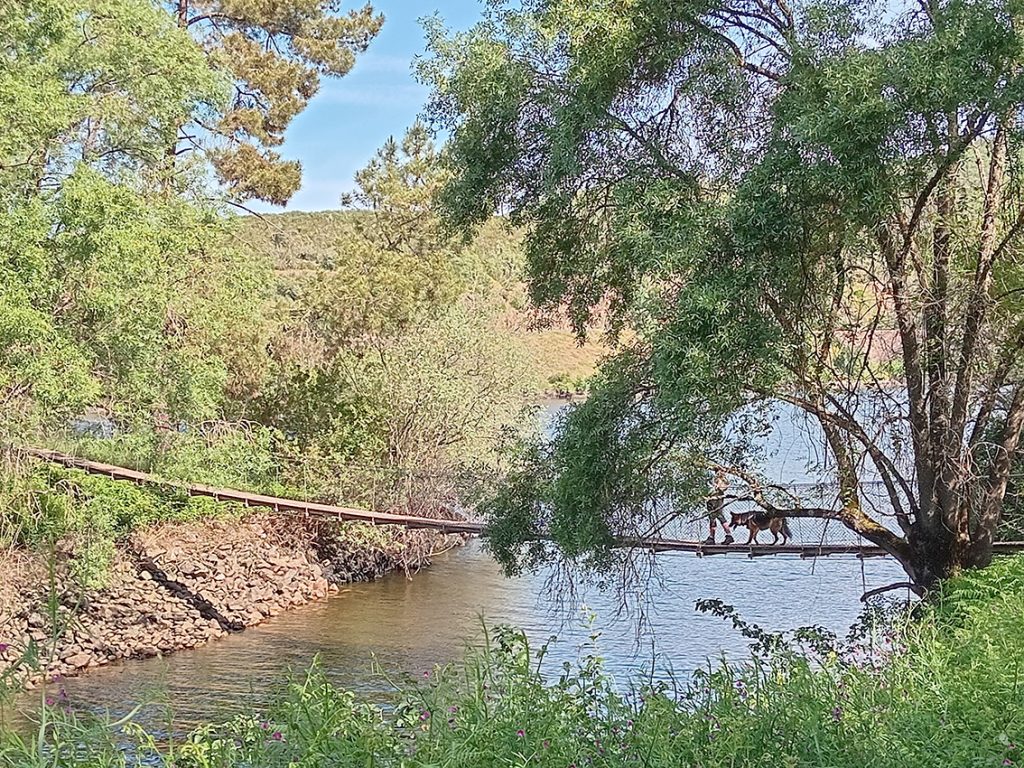
Hiking the banks of the Tejo
On this part of the walk there is an island (Ilha do Cabecinho) reached by a rope bridge and a kilometre further on the greenery opens up and you come to a tranquil little boat harbour and signs of civilization again. We took a break here (Pego das Portas), sitting on the beach and looking out at the Portas de Rodão, two rugged cliffs divided by the river – on the far side you can see a square watch tower named after the Visigoth King Vamba. The current castle was built by the Knights Templar. On the near side of the river a sheer wall of rock is home to a colony of Griffin Vultures that we sat and watched as they flew backwards and forwards – as it’s springtime, we assume they had nests full with baby griffins to feed.
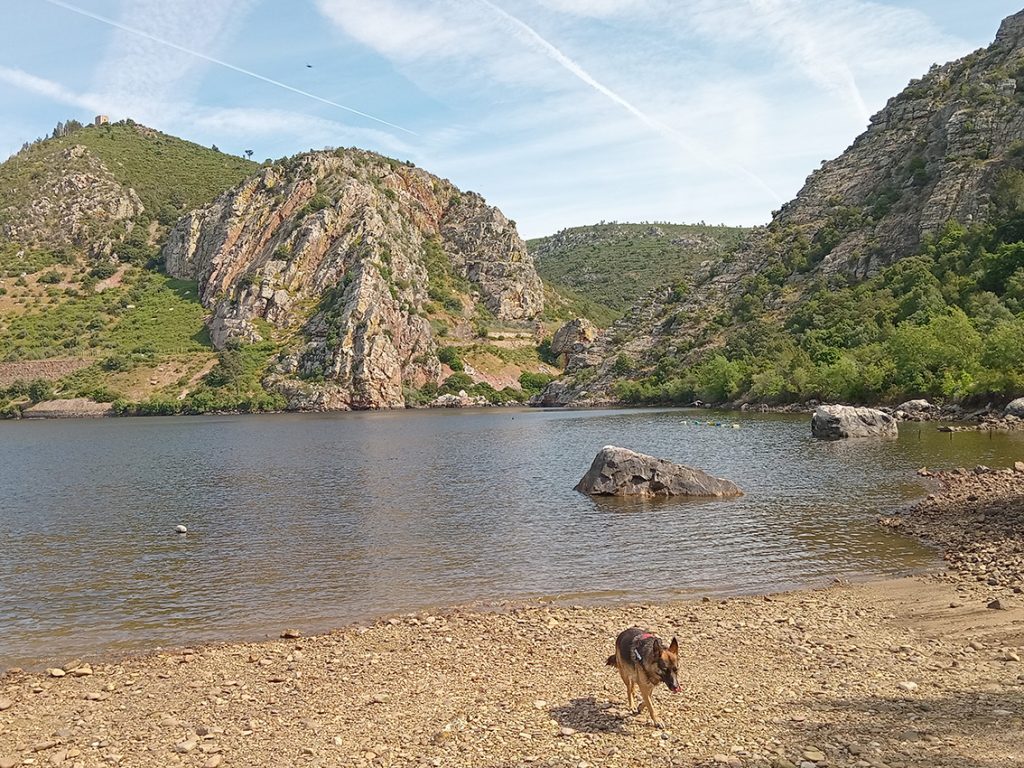
The Roman gold mines
Reluctantly we left the water and headed inland. After around a kilometre you come to a sign on the right saying ‘Castelejo 450m’. We debated whether to add the extra kilometre to our hike but decided we didn’t want to miss anything so headed off the main track and soon found ourselves winding our way between heaps of rocks that looked like they had been manually piled up. You reach a little viewing point with an information board at the top that explains when the Romans arrived in this part of Portugal, they found that the locals were already excavating gold, silver, copper and iron in the area, using an open pit and terrace method with water channelled from the river.
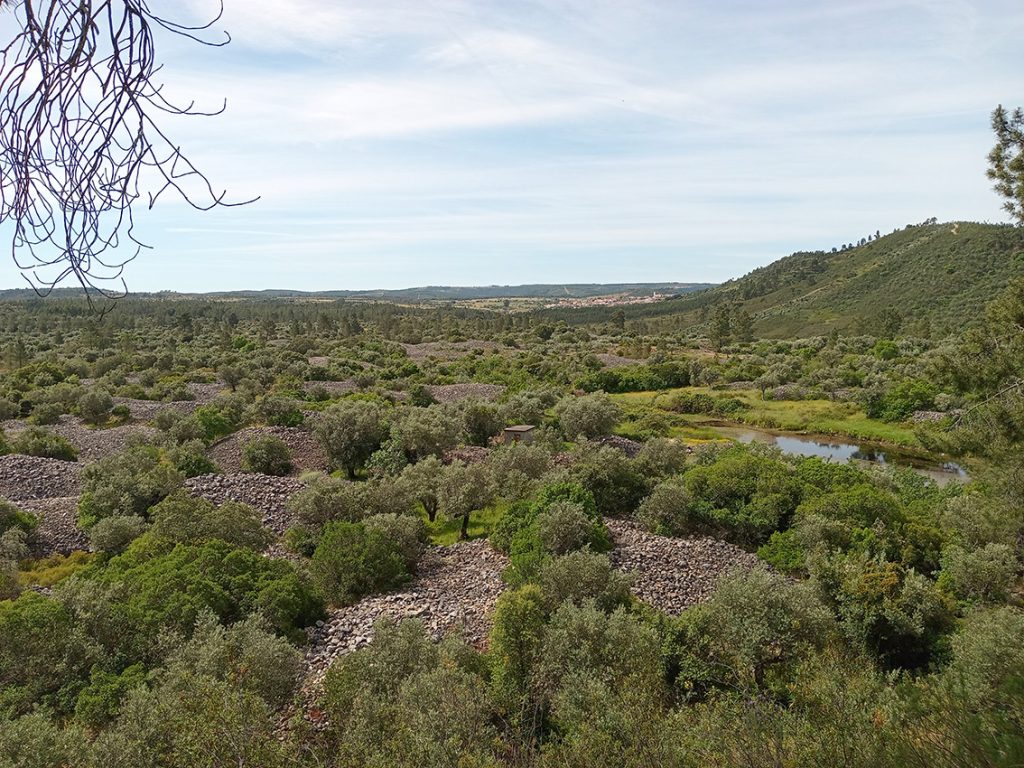
Under the Romans the mines grew extensively to occupy a huge area of 600,000m2, and the stones (quartzite) were laid in heaps aligned 10 metres apart, creating channels in between where the water was circulated and used to clean the sediment from the precious metals. This leaves the strange landscape that we can see today. Needless to say, the mines brought industry and prosperity to the area, initially to the Romans, but also continuing after they left. We wondered if there was still gold there to be found!
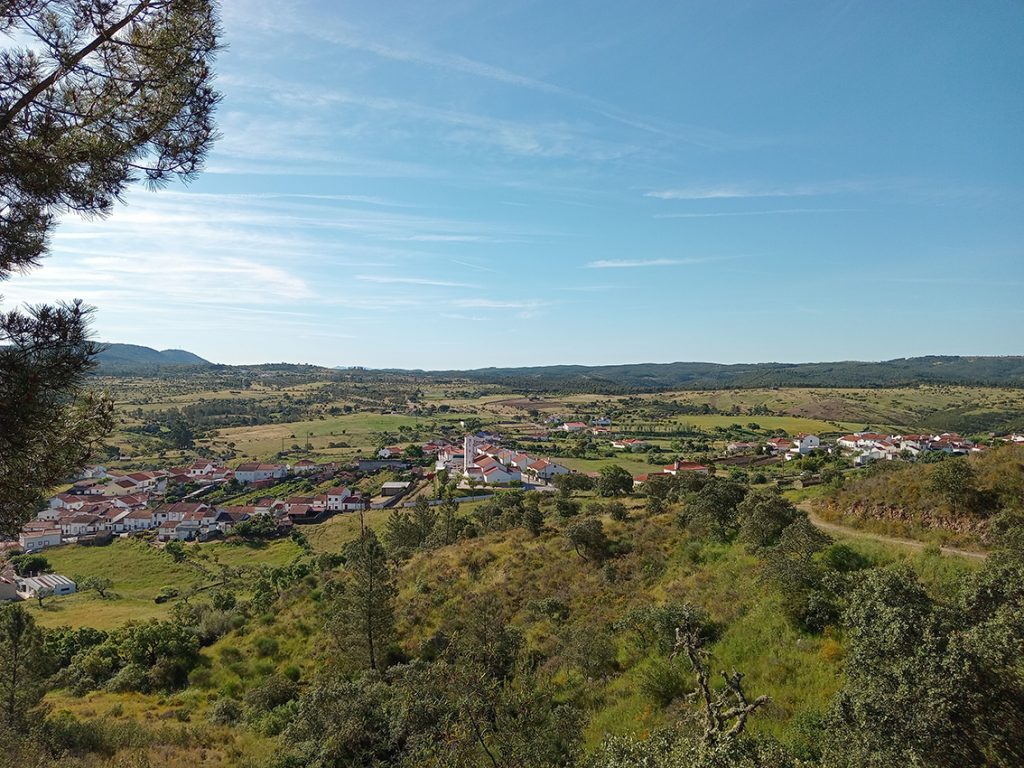
Heading back
The rest of the walk meanders back to the village of Arneiro, with a slight climb at the end back up to the church. Luckily ‘camping dog’ was happy to pull me up the final few steps. The gentleman at the Interpretation Centre, set up in the old village school, was happily waiting to show us around the small exhibition, which includes a short 7-minute video and a room with an authentic preserved fishing boat that had been made in the village. The boats were made of wood and then covered with a kind of tar mixed with horse-hair or hemp strands, and the fishermen would set out at night on the river sleeping through the night in a small cabin built into the boat.
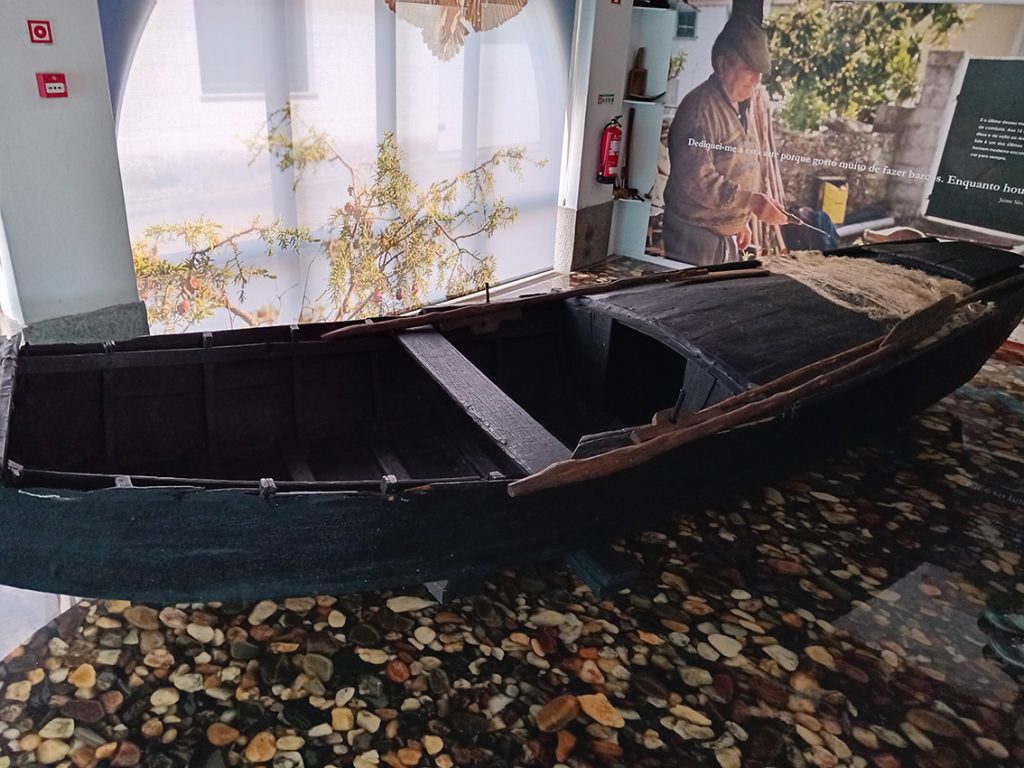
We are so glad we made the decision to take this walk – the natural setting was beautiful beyond words and we also learnt more about the history and traditions of our adopted home.
Details:
- Circular walk of 8,5km
- Start and finish point: Centro Interperativo do Conhal, Arneiro
- Fairly low difficulty
- Approx. 3 hours
- Well sign-posted all the way
- We walked this trail in April and met 1 other person!

